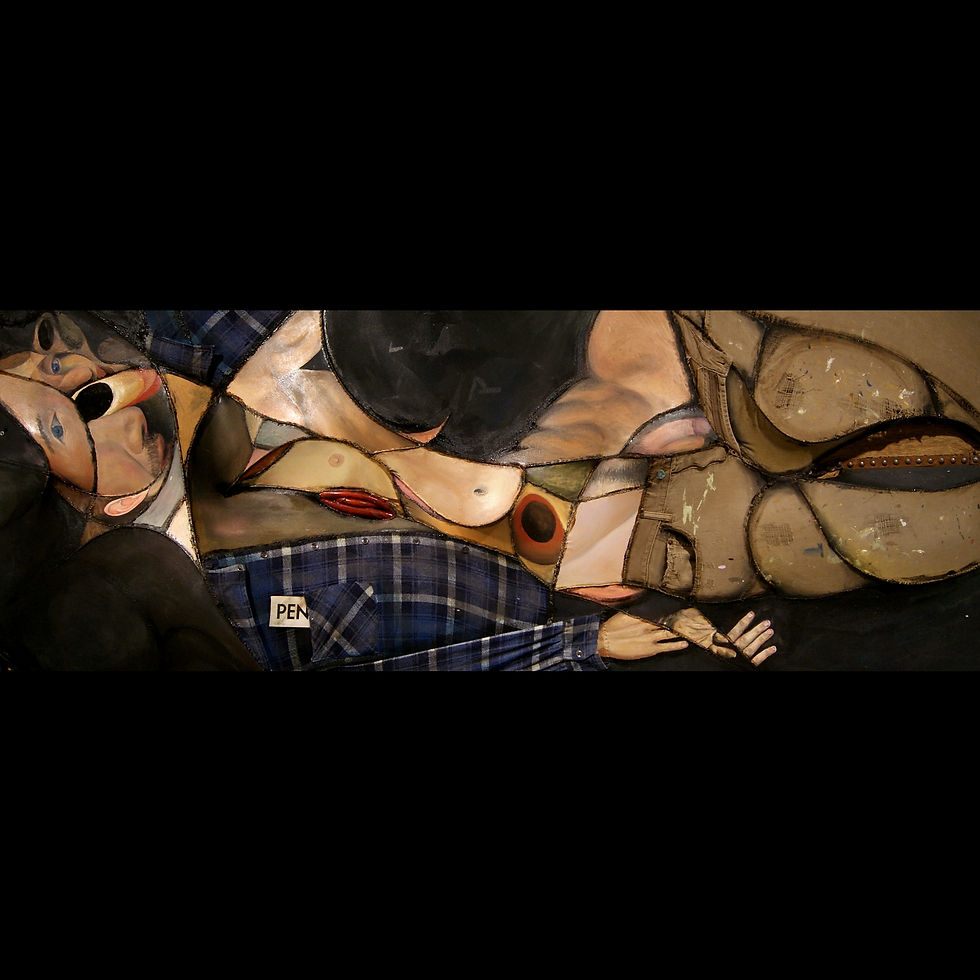Sculpture

A Sculpture by Jason Kaufman

A Sculpture by Jason Kaufman

(with blood, meat, and bone)" A Sculpture by Jason Kaufman

(salt from me is on your lips)" A Sculpture by Jason Kaufman
The sculptures presented here belong to a body of work that I call 'Narrative Assemblage'. It is not a body of work in terms of being governed by an overarching aesthetic, conceptual theme, or subject matter. It is a manner of working. In these sculptures I am concerned with telling stories through a careful arrangement of objects and images. There are no rules for what can or cannot be used. I’ll often start with a found object (An old beer can, fishing pole, boat oar, shovel). It’s often, but not always, an artifact of labor, broken or outmoded, that serves little purpose today. This foreign-to-me quality seems important. I bring it home and set it on a shelf and listen to its story—everything seems to retain a residual history. After some time the object’s history becomes so entangled with my own that I can’t tell the two apart. At this point the object will allow itself to be used; the first 'sentence' in a new narrative.
So, what is the story and how do I tell it? There are practical matters: Do I need to paint a picture or appropriate an existing image? What is the mood and what palette translates that mood? How will the viewer approach and interact with the work? Does it need to be large and imposing or something held intimately in the viewer's palm? Before long the artifact is paired with another object, an image, and even word (See Memesis). The whole work relies upon and grows out of the tension between these elements. These elements hash out the shape of a story, but the story is not (cannot be) said directly. The story is, in a sense, already written and the work allows it to be momentarily uncovered. The work is the catalytic signifier that mediates the Story to the Viewer.
"Writing" with objects and images has the benefit of maintaining certain obliqueness. Our demand for Truth slackens, because we do not tend to believe in objects in the same way that we believe in words. Objects don’t cast a spell in the same way that words do. We allow objects the space they need to exist as themselves, but we insist that words must mean something (preferably one thing and one thing only). Therefore, stories written with objects and images remain open. They do not point to an unchanging source of truth beyond the phenomenal world, but insist upon fluid and indeterminate nature of the symbol itself.
These stories have no beginning, no ending, no moral. They have no imperative other than to provide a playground for the viewers own flexible mental wanderings, soil for their fecund emotional life. This is something of the manner and feeling in which I approach Narrative Assemblages.


Jason Kaufman





